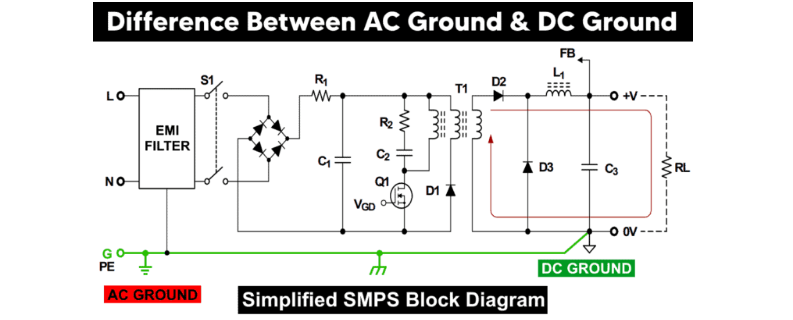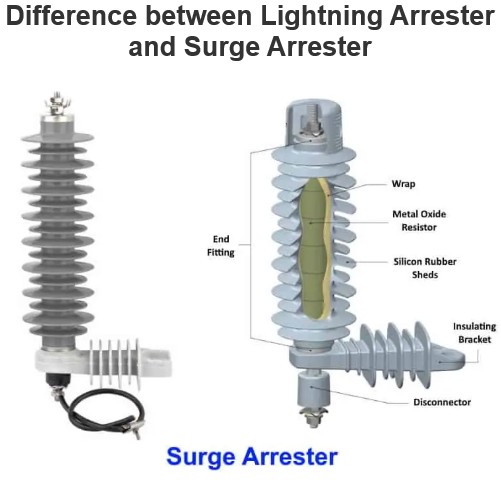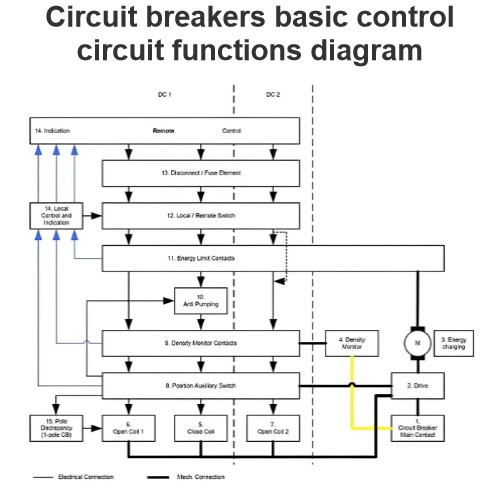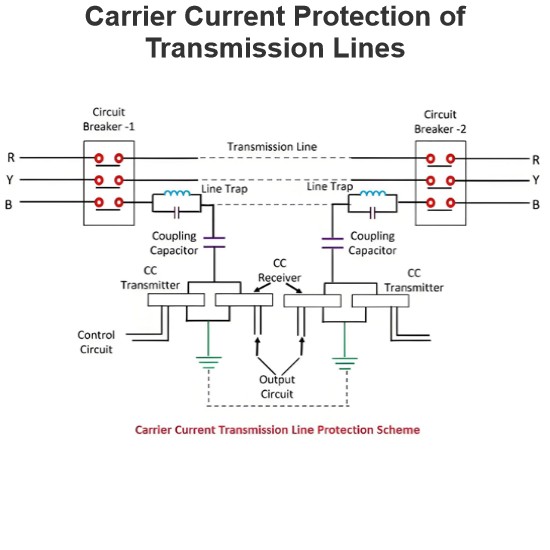What is the difference between AC ground and DC ground?
Comparison Between AC Grounding and DC Grounding: Key Differences
AC grounding and DC grounding may both serve to establish a reference point within an electrical system, but they diverge significantly in their fundamental characteristics, circuit behavior, and operational roles. These disparities are crucial to understand for ensuring the safe, efficient, and reliable operation of electrical systems that incorporate either alternating current (AC) or direct current (DC) power.
AC Grounding Practices and Significance
In the United States, AC grounding is a meticulously structured process. It entails bonding the metallic and exposed components of electrical devices to a ground rod. This connection is established through two crucial conductors: the equipment grounding conductor (EGC) and the ground electrode conductor (GEC). The EGC links the device's metallic parts to the grounding system, while the GEC extends from the grounding system to the actual ground rod, creating a low - resistance pathway for electrical current.
Countries adhering to International Electrotechnical Commission (IEC) standards follow a conceptually similar approach, though the terminology varies. Here, the metallic frame of an electrical device is connected to an earth plate using an earth continuity conductor. This conductor serves the same fundamental purpose as the EGC and GEC in the US system, ensuring that any fault currents can safely dissipate into the earth.
When it comes to the physical wires used for AC grounding, there are common color - coding conventions. Typically, a green wire, a green wire with a yellow stripe, or a bare conductor is employed. These color - coded wires are easily identifiable, playing a vital role in electrical safety. For instance, the ground terminal in a standard three - prong plug in the US or the earth pin in a UK - style plug is directly connected to the ground terminal within the AC supply system. This connection provides a direct route for any electrical faults to be safely diverted away from users.
In power distribution systems, AC grounding is often integrated with the neutral wire and the physical earth. This connection serves multiple important functions. Not only does it enhance electrical safety by providing a pathway for stray AC voltage and fault currents to flow harmlessly into the earth, protecting personnel from electric shock, but it also helps mitigate electrical noise and interference within circuits. By stabilizing the electrical potential and reducing unwanted electrical disturbances, AC grounding ensures the reliable and efficient operation of electrical systems, from individual devices to large - scale power grids.
DC Ground
A DC ground functions as the zero - voltage reference point in direct current (DC) circuits. Unlike in alternating current systems where voltage polarities constantly shift, the DC ground maintains a fixed electrical potential, acting as the consistent return path for the current flowing through the circuit.
The applications of DC grounding are diverse and crucial for the proper operation of various electrical systems. Commonly, the negative terminal of a DC circuit is designated as the ground, providing a stable 0V reference that is essential for accurate voltage measurements. In the context of chassis grounding, the metal frame of an electrical device is connected to this 0V point. This connection not only helps to minimize electrical noise interference but also enhances safety by providing a pathway for any unwanted electrical charges to dissipate harmlessly. Additionally, in signal processing, the DC ground serves as a common reference point for all signal voltages within a circuit, ensuring that electrical signals are properly defined and can be accurately transmitted and processed.
In battery - powered devices and electronic circuits, the DC ground is typically marked as 0V (zero volts). In single - supply circuits, it corresponds to the negative terminal, while in dual - supply systems, such as those providing ±12V, the ground acts as the midpoint reference, effectively establishing a 0V potential between the positive and negative voltage supplies. By providing a stable and consistent reference point, DC grounding plays a pivotal role in maintaining circuit stability, enabling precise voltage regulation, and facilitating accurate electrical measurements, all of which are essential for the reliable performance of DC - powered electrical systems.
Comparison between AC & DC Grounding

Key Distinctions Between AC and DC Grounding
Purpose
The fundamental purpose of AC grounding is centered on ensuring safety. By providing a low - resistance path for fault currents to flow into the earth, it protects personnel from electric shock and safeguards electrical equipment from damage during short - circuits or other electrical malfunctions. In contrast, DC grounding serves multiple functions within a circuit. It acts as a zero - voltage reference point for accurate voltage measurements, provides a return path for current, helps in minimizing electrical noise, and serves as a common reference for signal processing, all of which are crucial for the proper operation and stability of DC circuits.
Connection to Earth
AC grounding necessitates a direct physical connection to the Earth ground. This connection is established through grounding electrodes, such as ground rods, which create a reliable pathway for electrical current to dissipate into the earth. On the other hand, the connection of DC ground to the Earth is not always mandatory. While some DC systems may incorporate an earth connection for additional safety or to meet specific regulatory requirements, many DC circuits operate with a ground that is isolated from the Earth, focusing solely on providing a stable internal reference point within the circuit.
Role in Circuit Operation
In AC systems, the ground primarily functions as a safety feature. Its main role is to quickly divert fault currents away from the electrical system and into the ground, preventing dangerous electrical conditions from endangering people and equipment. In DC circuits, however, the ground plays a more integral and active role in the circuit's operation. It is essential for maintaining the proper flow of current, ensuring accurate voltage levels, and facilitating the effective transmission and processing of electrical signals. Without a well - defined DC ground, the circuit may not operate correctly, leading to issues such as signal distortion, incorrect voltage readings, and overall system instability.

AC Grounded vs DC Grounded Circuits
The concepts of AC grounding, DC grounding, and the combination of AC and DC grounding can be a source of confusion in power circuits, as their terminologies might seem deceptively alike. However, their implementation hinges on the specific requirements and intended applications of the circuit. Depending on the circuit design, these grounding types can be used in isolation or integrated to achieve optimal performance.
In a circuit, when grounding is facilitated via a capacitor, it is classified as AC grounded. Capacitors possess the characteristic of allowing only alternating current (AC) signals to pass through to the ground while effectively blocking direct current (DC). In contrast, a circuit is deemed DC grounded when DC current has a pathway to reach the ground, typically through components like resistors.
Consider the example of a non - inverting operational amplifier (op - amp). When configured with a voltage divider feedback resistor and connected to the ground through a capacitor, the op - amp circuit is considered AC grounded. The capacitor restricts the flow of DC components, allowing only AC signals to be shunted to the ground. On the other hand, if the op - amp is directly connected to the ground without any intervening capacitive elements, the circuit is DC grounded. This direct connection enables both AC and DC signals to flow to the ground, altering the circuit's behavior and performance characteristics significantly compared to its AC - grounded counterpart.
The Electricity Encyclopedia is dedicated to accelerating the dissemination and application of electricity knowledge and adding impetus to the development and innovation of the electricity industry.













